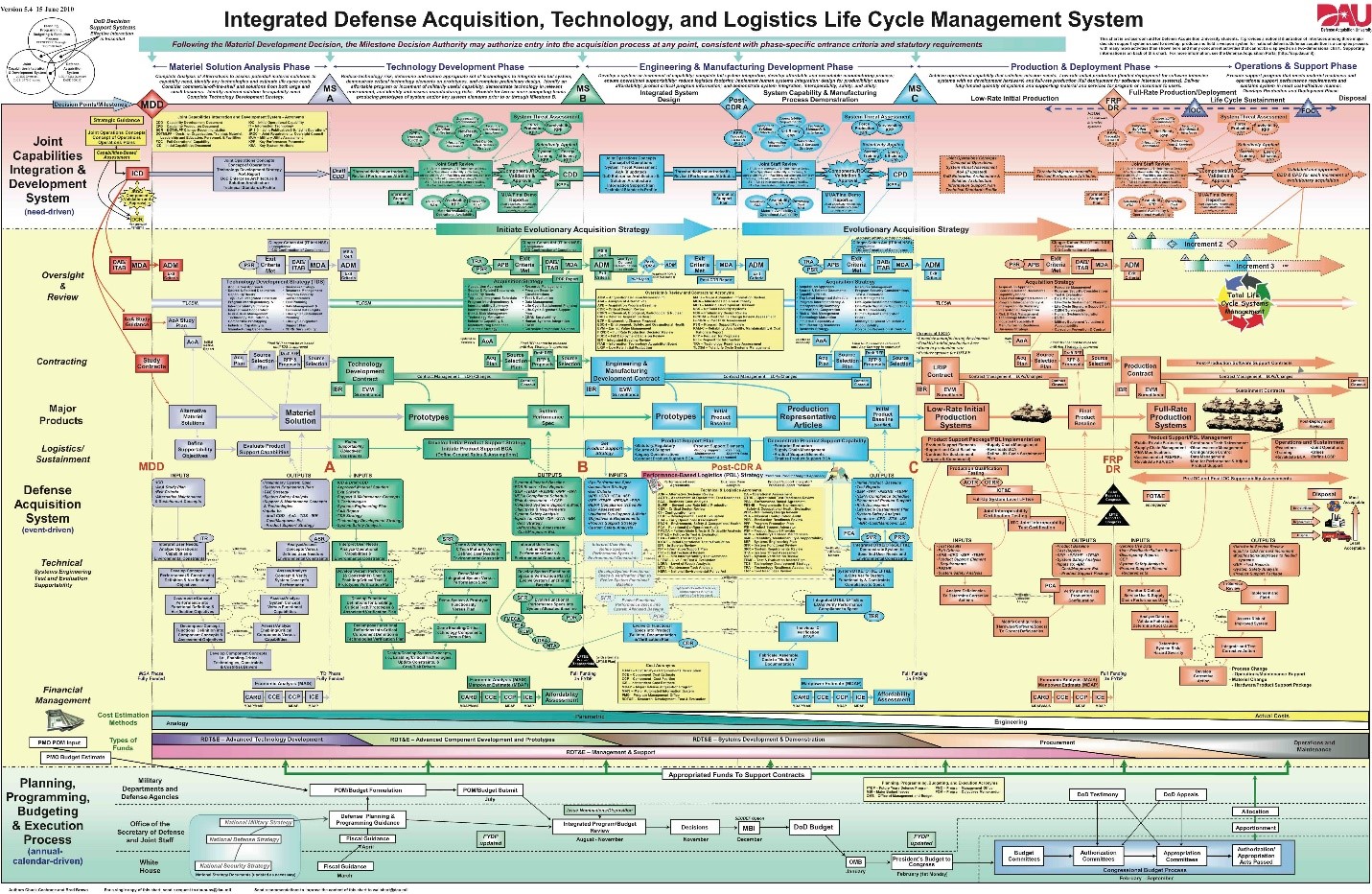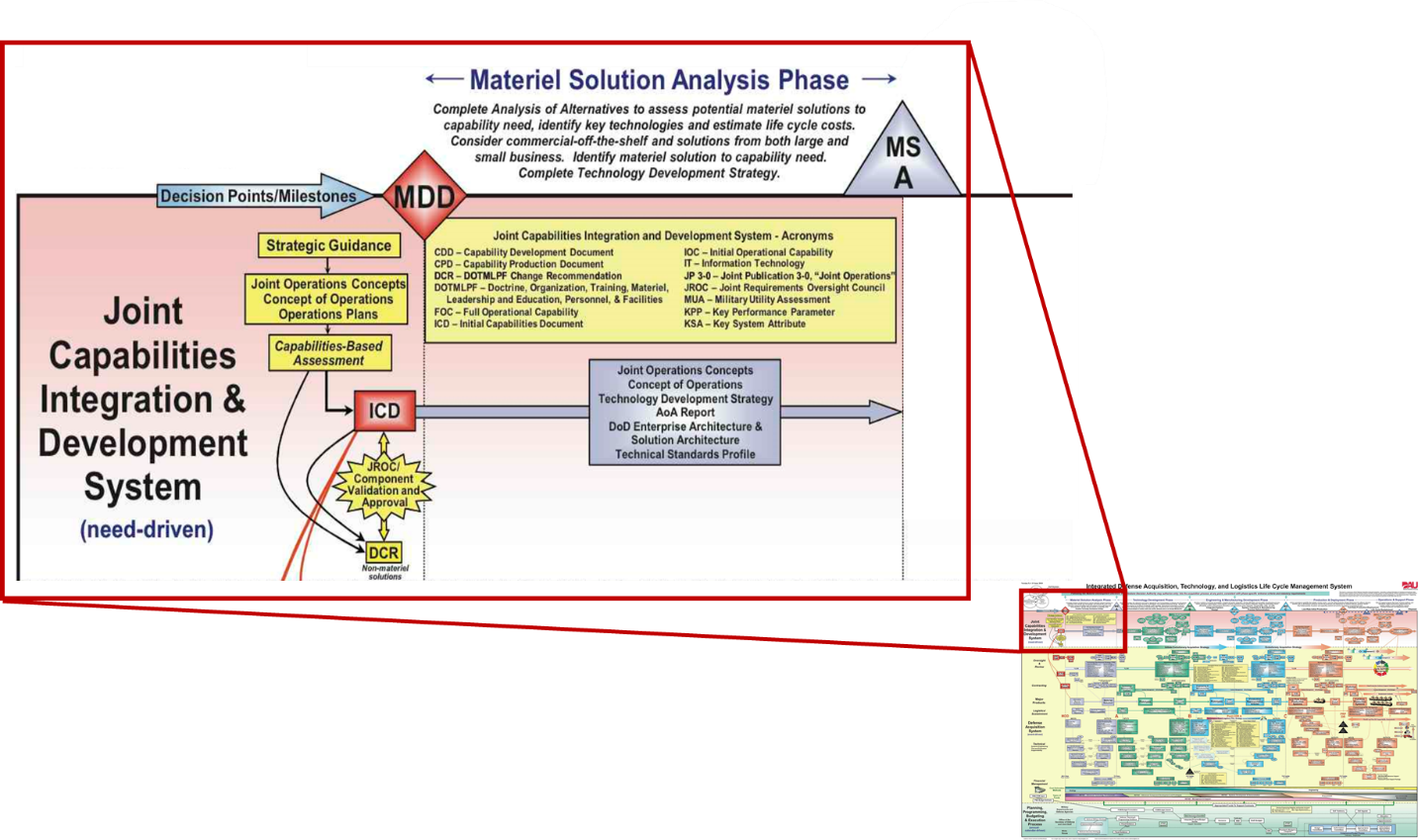Failures of Imagination: The Military’s Biggest Acquisition Challenge

Being stuck in yesterday’s thinking isn’t a new problem for the U.S. military. In 1898, Alfred Mahan said that “no service can or should be expected to reform itself.” Fast-forward to the 1950s and Curtis LeMay, ever the strategic bombing evangelist, dismissed ICBMs as “f—king firecrackers.” And up until a decade or so ago, the idea of using drones to deliver firepower ran up against every pilot in the Defense Department who saw it as a threat to their jobs and identity. It comes as no shock then that the military’s requirements generators didn’t dream up the Predator drone — the idea started in Abe Karem’s garage.
Failures of imagination are a recurring problem for the U.S. military. But in today’s fast-paced and highly contested world, this short-sightedness is more dangerous than ever. The speed at which America’s adversaries and competitors can field new capabilities and the pace at which technology changes puts the Defense Department at real risk of losing its technological advantage. It is well known that China, for instance, is rapidly developing and deploying new capabilities in artificial intelligence, quantum computing, and space that may give it significant military advantages.
A major part of the military’s struggle to keep up with, much less stay ahead of, global and technological change lies in its requirements process — the starting point of the acquisition process and, essentially, how the Pentagon figures out what to provide its forces. This approach to major system requirements (known as the Joint Capabilities Integration Development System, or JCIDS) is inward-looking and slow. A 2011 report on the Army, for example, revealed it takes on average 15-22 months to get requirements approved. The Pentagon usually thinks it knows what it needs, and it has no problem taking a long time detailing all the ins and outs of what it wants to buy.
In Volume I of its final report released this January, the Section 809 Panel outlined a new model for an acquisition system that leaves behind today’s religious adherence to byzantine processes. Instead, it envisions a dynamic, outcomes-focused system with one central mission: delivering capabilities that preserve the U.S. military’s dominance. Getting the acquisition system geared toward outcomes doesn’t just mean that contracting needs to be faster and the acquisition community smarter about realities on the ground. It also means the department — and, more importantly, the service branches — must open themselves to different ideas on how to accomplish their missions. To stoke true innovation, the acquisition process needs a new starting place: a fresh approach to requirements that focuses less on internally engineering solutions and more on understanding problems, minimizes unnecessary bureaucratic requirements, and opens the doors for competition from industry to suggest new solutions.
A Primer on the Requirements Process
Today’s requirements process traces its origins back to the Nixon administration’s efforts to curb defense spending. The first directive on the acquisition system, DoD Directive 5000.01, totaled just eight pages. It was issued to provide guidance for improving how the Defense Department would operate its acquisition system (including the requirements process). JCIDS was created in 2003 to support the Chairman of the Joint Chiefs of Staff and the service branches in determining and prioritizing the military’s capability gaps and needs. Much of the requirements process as it exists today in JCIDS is due to both historical precedent and the need to ensure joint capabilities among the services.
The Defense Department’s complex acquisition system has three interrelated processes: requirements development (JCIDS), funding (Planning, Programming, Budgeting, and Execution System), and procurement (Defense Acquisition System). Below is a very confusing snapshot of how these three components are linked and how the entire acquisition system functions.

Programs move through a series of development phases, each of which is completed by passing a milestone. At each milestone a senior decision-maker (called the milestone decision authority) reviews numerous documents, plans, and supporting materials before allowing the program to advance closer to development and deployment. At the top of the chart sits the JCIDS process. JCIDS is both the baseline for how the entire department determines requirements and a death sentence for innovation.
JCIDS: Joint Cutting-edge Ideas Death Sentence
Under the JCIDS process, the Defense Department typically predetermines the solution it seeks, spending far too little time analyzing and truly understanding the problem and the full range of ways to solve it. The requirements process winnows competitive proposals from industry down to only those that align with the solution the department opted to pursue, potentially years before ever initiating a competition. Official guidance states that Milestone A (a critical early stage in the acquisition process, also called the Risk Reduction Decision) is an “investment decision to pursue specific product or design concepts.” In other words, by this early stage, the crucial decision has already been made about the nature of the solution. By the time they get to Milestone A, the requirements developers most likely have already defined the product they want to acquire, have begun systems engineering to “support selection of a preferred materiel solution,” and started building their preferred solution into the acquisition strategy. A closer look at the chart above offers a glimpse into how much occurs before reaching Milestone A, when a program can begin acquiring a given product or design.

Among the documents a program first produces is the initial capabilities document, itself composed of numerous other documents including strategic guidance and a capabilities-based assessment. The program then creates further documents, including an analysis of alternatives, a process with multiple steps and supporting documents, to evaluate different avenues of approach to developing or acquiring the desired capability. All this is before a solicitation (i.e., requests for proposals from industry) can even be released. Typically, once the request for proposal is released, it often either signals or outright identifies the preferred solution with detailed specifications and technical requirements.
An organization that generates requirements for a new capability through the JCIDS process tends to generate requirements that look very similar to the technology and platforms already known to that organization. Surface warfare officers tend to prefer manned ships; pilots gravitate toward planes with a cockpit; and armor officers want more armor. Bureaucracies often become wedded to certain missions and technologies, and fiercely resist changes or perceived threats to either.
Politics within and among the services also leads to unnecessary performance parameters finding their way into the requirements. Where more than one service has a requirement for a given acquisition (for example, the F-35 Joint Strike Fighter), there is no incentive to cut out one desired performance parameter in favor of another. The more stakeholders invested in an acquisition and its requirements, the more likely the program will be given resources, and the harder it will be for Congress or the department to kill. As requirements creep out of control, the time to delivery slips further and further. The result? The military acquires capabilities that are often unimaginative, poorly conceived, or simply obsolete before they are ever deployed (assuming they are ever deployed at all).
Go Faster, But Spend More Time Understanding Problems
Discussions with people involved in acquisitions have made it clear that JCIDS has evolved into a slow, onerous process that values finely crafted requirements over both innovation and the timely delivery of capabilities. One obvious solution to producing quality requirements faster is to reduce documentation and approval levels.
Since the 1970s, the documentation articulating guidance, policies and regulations, and internal oversight and controls has ballooned into thousands of jargon-filled pages. The requirements process has become overburdened by policy and oversight. For example, acquisition program managers are required to generate both an acquisition strategy and an acquisition plan, which are often duplicative in content. Multiple offices support each step in the requirements process by producing yet more duplicative documents, such as an analysis of alternatives study guide, an analysis of alternatives study plan, and an analysis of alternatives final report for each major acquisition. Further still, each document is vetted by multiple intermediate stakeholders as requirements make their torturous way up the review chain to the ultimate decision makers. There’s simply too much fat in the process.
Although JCIDS is still the standard for requirements generation, it isn’t the only way to deliver high-quality capabilities. Special Operations Command’s version of JCIDS (SOFCIDS) is much more efficient than virtually the rest of the Defense Department. Special Operations Command has unique latitude when it comes to acquisition because their mission is more fast-paced than much of the military, and it is also not buying major systems like the service branches are. Nonetheless, Special Operations Command’s emphasis on proactiveness and timeliness should be a model for the department. Aggressive timelines and minimal documentation are themes throughout the SOFCIDS policy guidance (which is not publicly available). Right up front, the policy states, “Unlike JCIDS, the SOFCIDS process may start with validation of a capability production document.” For context, the capability production document, which covers the information required for producing, testing and deploying a new capability, doesn’t occur within the JCIDS model until Milestone C (the point at which a decision is made to begin initial production or fielding of a capability). Milestone C often is often reached months, years, or even decades after a requirement was validated in the first place. In other words, Special Operations Command cut out a significant chunk of the rest of the Defense Department’s requirements process; yet it still accomplishes the military’s most demanding combat missions and maintains the world’s most effective fighting force.
While an expedited acquisition timeline is appealing, going fast for the sake of going fast is not necessarily the way to consistently “deliver performance at the speed of relevance” — a key point from the 2018 National Defense Strategy that Deputy Secretary of Defense Robert Work stressed recently to the Section 809 Panel. The department needs to take time to make sure it’s pursuing a smart, effective acquisition. But spending time writing performance and engineering requirements creates barriers to good ideas. The current process encourages the Pentagon to internally develop its preferred solution and technical specifications; the output often lacks imagination, fails to meet the warfighters’ real needs, or delivers an outdated solution to yesterday’s problem. A better approach is to spend time understanding the underlying needs of the department and warfighters. Exploring today’s — and tomorrow’s — problems will yield greater clarity for the military and encourage industry to generate more effective and creative solutions.
There are successful examples that the department can look to as inspiration for shifting its requirements process to a problem-solving process. The Hacking for Defense program is a great starting point. The program teaches students to break down and thoroughly explore problems, then cultivate and iteratively develop smart solutions. The program recently received a nod from Congress, which gave the secretary of defense authority to fund Hacking for Defense training and education programs. Teaching both the operational and acquisition communities to identify and clearly articulate problems will help open the door to innovation and new ways of getting the mission done.
Don’t Use Competition Just to Fill Requirements; Use Competition to Help Figure Them Out
When the Defense Department requests proposals from contractors, it overwhelmingly uses statements of work or performance work statements to specify performance and technical requirements. Statements of work impose detailed tasks, timelines, and deliverables on contractors, while performance work statements establish objective, measurable outcomes that the contractor is obligated to meet. This limits what solutions contractors can offer in response to a solicitation by translating high-level requirements into detailed specifications. Because both statements of work and performance work statements are typically prescriptive, they limit the competition process to comparing versions of the same ideas and capabilities, rather than fostering a competition of differing solutions. By not fostering a true competition of ideas, this bureaucracy stifles innovation.
Building an outcomes-based system requires more open-ended competition to identify innovative ideas and capabilities at the start of the acquisition process. For instance, rather than statements of work, the department could use statements of objectives to open the door to potentially dissimilar solutions and better define and fulfill performance requirements. Largely underutilized by the department, statements of objectives demonstrate a shift in thinking. They communicate high-level performance objectives, rather than technical requirements, giving contractors leeway in deciding how best to accomplish those objectives. By putting solutions in competition with one another through statements of objectives, hack-a-thons, or other means, the Defense Department can learn more about what is possible and use insights from across the market to find smarter solutions to its strategic and operational problems.
Create Space for Change
The Pentagon needs to minimize the congested bureaucracy that has seeped into acquisition and requirements generation. It also needs to spend less time specifying requirements and put more energy toward understanding and solving problems. Where problems are complex, novel, or particularly risky, a competition of solutions or ideas should be pushed up to the front of the acquisition process. By releasing a request for proposal with a statement of objective prior to reaching Milestone A, for example, the Pentagon could gather a range of very different perspectives from the entire marketplace on how to achieve the outcome it seeks. Not until then should the department begin to determine what it will acquire. If the solution is mature and an acceptable business proposition, the department can move ahead and buy that solution — no need for additional competitions and endless approval chains.
Congress may also need to change or clarify relevant statutes to allow the Defense Department to release requests for proposals without “firm” requirements and cut mandatory documentation down to the bare essentials. The department would also need to revise the constellation of policies that govern the requirements and acquisition processes. Both Congress and the department have shown significant appetite for this kind of change. For example, in addition to supporting Hacking for Defense, the department is expanding the SOFWerx model, which relies on challenges and hack-a-thons to attract innovative solutions to national security problems.
Reorienting the department toward creatively solving problems requires education and training of both the operational and acquisition communities. The Pentagon’s culture and leadership need to let go of the idea that total control over the acquisition process produces quality and minimizes risk. This evolution in thinking will take time and intentional direction from Congress, the department, and the services. Culture won’t change without first creating new incentives, a new system, and new processes and guidance. The U.S. military has to open its doors for more Abe Karems and their crazy ideas.
Jarrett Lane is the Chief of Staff for the 809 Panel and is researching barriers to entry into the defense market for innovative companies. He also recently co-founded Advance Intelligently, a non-profit helping communities deal with the impacts of disruptive technologies.
Michelle V. J. Johnson supports the 809 Panel as managing editor, IT team researcher, and cost accounting standards team lead. A former English professor, she takes an academic approach to her collaborations with various research teams. She earned her PhD in English Literature at Michigan State University.
Image: Syednairb/Flickr

